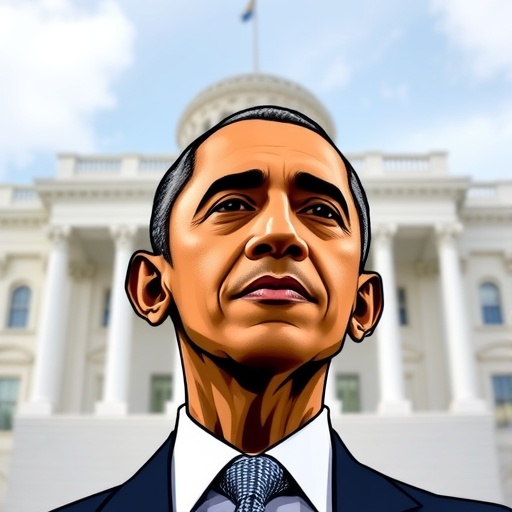As millions of Americans log in to healthcare.gov for open enrollment, they’re facing sticker shock with Obamacare premiums jumping an average of 20% this year, compounded by a protracted government shutdown that has left federal support lines silent and subsidies in limbo. This confluence of rising costs and political gridlock is amplifying strains on household budgets across the U.S. economy, just as families brace for the holiday season.
- Premium Increases Squeeze Working Families Amid Holiday Pressures
- Government Shutdown Paralyzes Obamacare Enrollment Support Services
- Political Gridlock in Washington Exacerbates Health Insurance Uncertainty
- Strategies for Americans to Tackle Rising Obamacare Premiums
- Future Outlook: Premium Pressures and Potential Reforms Shaping Healthcare Landscape
Premium Increases Squeeze Working Families Amid Holiday Pressures
The start of open enrollment on November 1 marks a critical window for Americans to secure or renew health insurance through the Affordable Care Act, commonly known as Obamacare. However, for many, the excitement of potential coverage is overshadowed by steep hikes in premiums. According to the Kaiser Family Foundation, average monthly premiums for a family plan under Obamacare have climbed to $1,657, up from $1,381 last year—a 20% increase driven by escalating medical costs, inflation, and insurer adjustments post-pandemic.
Take Sarah Jenkins, a 42-year-old nurse from Ohio, who shared her frustration in a recent interview: “Last year, my premium was $450 a month after subsidies. Now it’s $540, and with the shutdown, I can’t even get through to confirm if my income qualifies for help. It’s like the system is punishing us for trying to stay healthy.” Jenkins’ story echoes thousands across the nation, where middle-income earners feel the pinch most acutely. In states like Texas and Florida, where Obamacare enrollment is high but Medicaid expansion is absent, premiums have surged even higher, averaging 25% increases, per data from the Centers for Medicare & Medicaid Services (CMS).
These rises aren’t isolated; they’re part of broader trends in the health insurance landscape. Insurers cite higher utilization of services after COVID-19 restrictions lifted, coupled with supply chain issues inflating drug and hospital costs. For the U.S. economy, this means tighter consumer spending. Economists at the Brookings Institution estimate that premium hikes could siphon off $50 billion from disposable income in 2024 alone, potentially slowing retail sales and exacerbating inflation concerns.
- Key Statistic: 14.5 million people enrolled in Obamacare plans last year; projections show a 5% dip this open enrollment due to cost barriers.
- Regional Impact: In the Midwest, premiums rose 18% on average, hitting rural areas hardest where provider networks are thin.
- Demographic Hit: Young adults under 35, often balancing student loans and entry-level jobs, face the steepest relative increases at 22%.
Navigating these changes requires quick action during the open enrollment period, which runs through January 15 in most states. Yet, with premiums soaring, many are weighing whether to opt for higher-deductible plans or forgo coverage altogether—a risky move in an era of medical uncertainties.
Government Shutdown Paralyzes Obamacare Enrollment Support Services
The ongoing government shutdown, now in its third week, has thrown a wrench into the open enrollment process, leaving Obamacare navigators and federal call centers understaffed or entirely offline. The Department of Health and Human Services (HHS), responsible for overseeing the marketplace, reports that over 80% of its enrollment assistance staff are furloughed, resulting in wait times exceeding 45 minutes on healthcare.gov—when lines are even answered.
This disruption is particularly acute for low-income families relying on subsidies to offset premiums. Under Obamacare, income-based tax credits can reduce costs by up to 80%, but verifying eligibility now involves delays that could push applicants past deadlines. “The shutdown isn’t just about closed parks; it’s closing doors to healthcare access,” said Dr. Elena Ramirez, a policy analyst at the Urban Institute. “We’ve seen enrollment drop by 10% in past shutdowns, and this one could be worse with premiums already so high.”
State-based marketplaces, like those in California and New York, are somewhat insulated, offering their own support hotlines. However, in federally facilitated states—which cover 30 marketplaces nationwide—the impact is severe. A recent poll by the American Hospital Association found that 62% of uninsured adults delayed signing up due to confusion over shutdown-related interruptions.
- First, federal websites remain operational but glitchy, with reports of subsidy calculators malfunctioning.
- Second, nonprofit navigators funded by HHS grants are scrambling with limited resources, serving only 40% of usual capacity.
- Third, paper applications, a fallback for many, face processing backlogs that could extend into months.
For the broader U.S. economy, these hurdles translate to uncompensated care burdens on hospitals, estimated at $40 billion annually when enrollment lags. Small businesses, too, are affected as employees grapple with coverage gaps, potentially increasing absenteeism and productivity losses.
Political Gridlock in Washington Exacerbates Health Insurance Uncertainty
At the heart of the turmoil is a deepening political standoff over budget negotiations, with Republicans pushing for spending cuts and Democrats defending social programs like Obamacare. House Speaker Mike Johnson recently stated, “We can’t continue funding unchecked expansions of government healthcare without fiscal responsibility,” while Senate Majority Leader Chuck Schumer countered, “This shutdown is sabotaging American families’ access to essential health insurance right when they need it most.”
This rhetoric has real-world fallout. Proposed Republican bills aim to repeal certain Obamacare mandates, such as the individual coverage requirement, which could further destabilize premiums by driving healthier individuals out of the risk pool. On the Democratic side, calls for enhanced subsidies to counter inflation have stalled. The result? Insurers are hedging bets with higher rates, anticipating regulatory flux.
Health policy experts warn that prolonged uncertainty could mirror the 2017-2018 period, when similar battles led to a 3 million enrollment drop and premium spikes of 34%. “The U.S. economy can’t afford this volatility,” noted Mark Cuban, co-founder of the online pharmacy Cost Plus Drugs, in a tweet that garnered widespread attention. “Obamacare isn’t perfect, but dismantling support during open enrollment is economic malpractice.”
Stakeholders from both sides of the aisle are feeling the pressure. The insurance industry, represented by America’s Health Insurance Plans (AHIP), has lobbied for stability, warning that without it, marketplace participation could plummet. Meanwhile, consumer advocates like Families USA report a surge in inquiries—up 150% from last year—about affordable alternatives, including short-term plans that skirt Obamacare protections.
In this charged atmosphere, open enrollment becomes a battleground, with families caught in the crossfire. The political impasse not only delays aid but erodes trust in the health insurance system, prompting some to explore employer-sponsored options or COBRA, which often come with their own premium premiums.
Strategies for Americans to Tackle Rising Obamacare Premiums
Despite the challenges, experts offer practical advice for navigating open enrollment amid soaring premiums. First and foremost, compare plans thoroughly on healthcare.gov, focusing on total costs including deductibles and out-of-pocket maximums. “Don’t just chase the lowest premium; look at the full picture,” advises Karen Pollitz, a senior fellow at Georgetown University’s Health Policy Institute. For instance, silver-level plans, which qualify for cost-sharing reductions, can save eligible enrollees up to $5,000 annually.
Subsidies remain a lifeline: With the American Rescue Plan’s enhanced credits extended through 2025, households earning up to 400% of the federal poverty level—about $58,320 for an individual—can cap premiums at 8.5% of income. However, the shutdown complicates applications, so using state resources or certified brokers is key. In addition, shopping during the first weeks of open enrollment often yields better provider options before popular plans sell out.
For those hit hardest, alternatives include Medicaid checkups via state portals or appealing premium decisions if errors in income reporting occurred. A list of tips includes:
- Update your information: Report any 2023 income changes to maximize subsidies.
- Leverage free help: Contact local health centers or use the nonprofit Enroll America for virtual assistance.
- Consider family glitches: Recent IRS rules now allow subsidies for family members even if the primary earner gets employer coverage.
Businesses are stepping up too, with some offering premium reimbursements to retain talent amid labor shortages. Yet, for the uninsured—numbering 28 million—these strategies underscore systemic gaps in the U.S. economy’s approach to health insurance affordability.
Future Outlook: Premium Pressures and Potential Reforms Shaping Healthcare Landscape
Looking ahead, the trajectory of Obamacare premiums and open enrollment hinges on resolving the government shutdown and upcoming legislative battles. If Congress passes a clean funding bill by mid-December, as some optimists predict, enrollment support could rebound, potentially boosting sign-ups by year’s end. However, persistent political divides may lead to further premium escalations, with actuaries forecasting another 15% rise in 2025 absent reforms.
Broader implications for the U.S. economy are stark: Unchecked premium growth could widen inequality, pushing more families into medical debt—already at $195 billion nationwide. Advocacy groups are rallying for expansions, such as capping out-of-pocket costs or integrating mental health parity more robustly. Meanwhile, states like Colorado are experimenting with public options to compete with private insurers, offering a glimpse of innovative paths forward.
As open enrollment progresses, the spotlight remains on Washington. Bipartisan talks on stabilizing the marketplace could mitigate damages, but experts like those at the Commonwealth Fund emphasize urgency: “Without action, we’re risking a healthcare crisis that ripples through every sector of the economy.” For now, Americans must adapt, but the hope is for policies that prioritize accessible health insurance over partisan wins.









